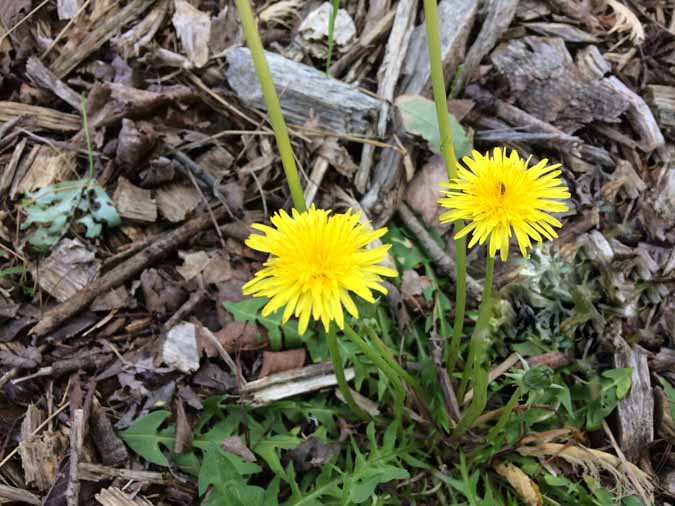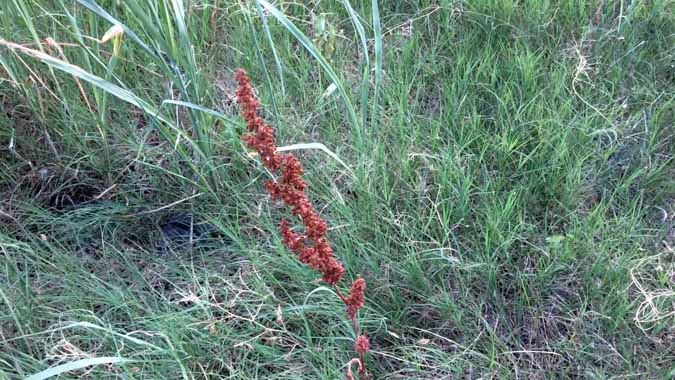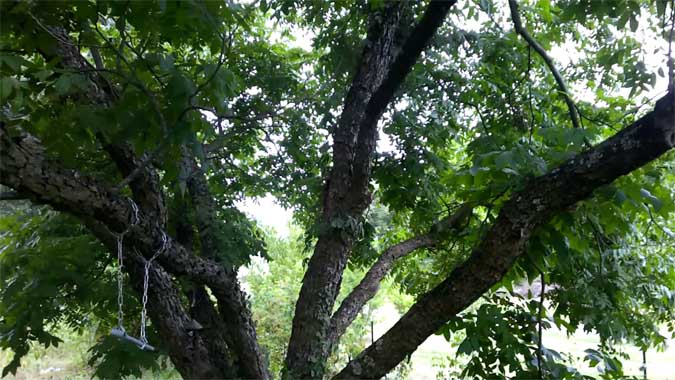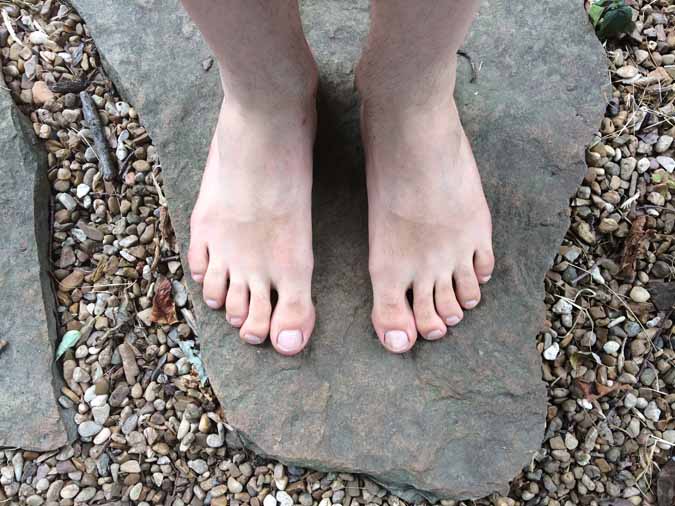The 30-Day Survival Challenge, Part 3
Follow my journey in this series of articles and videos as I survive for 30 days off of the foods I can get through foraging, hunting, fishing, and trapping. Along the way, I’ll pass along my strategies, tips, and tricks for survival.
Read Part 1: “Living Off the Land: Surviving Week #1”
Read Part 2: “15 Wild Foods That Will Keep You Alive In An Emergency”
In my previous articles, I talked about my two primary calorie sources during the first week of my survival challenge and about 15 foods I’ve been relying on during my 30-Day Survival Challenge. Today, I’ll focus on the second week of the challenge, including how to find an incredibly important nutrient in the wilderness: sodium.
Living Off the Land: Week #2
Welcome to week 2 of my 30 days of survival. During this time, I will be surviving on foods that I can gather through foraging, hunting, and fishing. As I write this, I am wrapping up the at-home half of my adventure and am preparing for a 2-week hike across the Ozarks Highland Trail.
Did I mention that I’ll be hiking barefoot? That’s right. I’ll be traveling hobbit-style, though I will have a pair of shoes in my pack, just in case. As much as I love going barefoot, that’s a lot of miles (165 miles or 265 kilometers) and a lot of unfamiliar trails. Be on the lookout for daily videos of my progress.
Let’s Talk Nutrition
After the first week, I’ve pretty much gotten my food resources straightened out. I have plenty of fish and blackberries, along with an assortment of wild greens. And since we talked mostly about calories last week, this week I’d like to focus on nutrition.
This is one area where living off the land really shines. Calories may be harder to come by in the wild, but vitamins and minerals are widely abundant. If you eat a variety of wild foods, you’ll be much more deeply nourished than by eating anything from a grocery store.
I would even put wild foods up against a home garden in most cases.
Wild plants are just so self-sufficient. They don’t have humans coming along to water, weed, and care for them. They need to have everything within them to survive. It’s just natural that they would be densely nutritious and full of life.
It’s a general truth, though by no means absolute, that wild foods are more nutritious than tame ones. For example, did you know that lamb’s quarters (Chenopodium album) has three times the calcium of spinach? Or that rose hips have 50 times more vitamin C than citrus?
But don’t think that I’m disparaging your garden! Nor am I suggesting that a garden is unimportant in a healthy lifestyle or even a survival situation. Far from it! Cultivated fruits and vegetables marry the best of the wild and civilized worlds. They combine high nutrition with high energy. Plus, they’re easier to harvest and they taste great.
Animals can also be good sources of vitamins and minerals, if you know what to eat. In the U.S., we typically eat only the muscle tissue of animals and shun the “gross” bits. But if you’re trying to satisfy all of your nutrient needs, you’ll need to develop a taste for liver, gizzards, brains, and even intestines. If that list freaked you out, just remember . . . baby steps. Oh, and don’t forget to make plenty of bone broth!
Finding Sodium in a Survival Situation
Sodium is one nutrient that I would like to give special attention to. It’s incredibly important. It is used to regulate numerous important functions of the body.
We normally don’t think about getting enough salt. (In America, we usually have to work hard to keep our salt intake low.) But in a wilderness survival setting, you’ve got to be conscious of getting enough.
Fortunately, it isn’t hard to find, if you know what to look for!
If you happen to live by the ocean, you’ve got the ultimate salt source. Just boil or evaporate ocean water until you’re left with dry sea salt. Or if you live somewhere with natural deposits in the soil, you can just pull it out of the ground.
For most of us, however, we’ll need to look to other sources.
Animal Blood
In animals, blood is a good source of sodium. Embrace your inner vampire and try out a blood sausage. Or don’t bleed out your meal before cooking it.
Roots

Dandelions
Roots tend to be good plant sources of sodium. Dandelions, yellow dock, and anything in the walnut family (walnut, hickory, and pecan) tend to collect sodium in their roots.
- Dandelion roots can be eaten raw or cooked.
- Dock root has to be dried before you eat it. Fair warning: It tastes awful, but it’s highly nourishing.
- Walnut, hickory, and pecan roots can be cut into small pieces and simmered in water to coax out the minerals. Remove the root pieces before your solution starts getting thick, and continue reducing to remove all the water. What you’re left with will be a mixture of minerals, rather than pure sodium.

Yellow dock
What I’ve Been Eating
If you’d like to know more about what I’ve been eating to keep myself going, and how I’ve been preparing it, check out the video below:
What do you think? Would you be willing to eat organ meats or wasp larva? Do you have any foraging or survival experiences you’d like to share? Are there any other food sources that I should be looking at? Let me know in the comments, and be sure to follow my progress on my survival journey through the Ozark mountains.
_______________________________________________________
Psst! Our Lawyer Wants You to Read This Big, Bad Medical Disclaimer –> The contents of this article, made available via The Grow Network (TGN), are for informational purposes only and do not constitute medical advice; the Content is not intended to be a substitute for professional medical advice, diagnosis, or treatment. Always seek the advice of a qualified health care provider with any questions you may have regarding a medical condition. If you think you may be suffering from any medical condition, you should seek immediate medical attention. You should never delay seeking medical advice, disregard medical advice, or discontinue medical treatment because of information provided by TGN. Reliance on any information provided by this article is solely at your own risk. And, of course, never eat a wild plant without first checking with a local expert.
_______________________________________________________

Scott Sexton is a TGN Trailblazer, a highly experimental gardener, an unrelenting weed-eater, and a largely non-profit herbalist (much to his wife’s chagrin). When Scott is not teaching foraging classes, testing out theories in the garden, or grazing in the forest, he can be found at his Facebook page, “A Forager’s Guide to the Zombie Apocalypse.”











COMMENTS(6)
Organ meats of course. Have you ever had beef heart? properly prepared and its quite tasty. Funny story about organ meats, we used to give the cuts of meat we eat now to the dogs and the organ meats were more desired by humans.
Dont forget Nettle…Vitamins A, C, D calcium, iron, phosphorus and potassium and socium and silica !
Hi Heather. Let me see. I’ve had squirrel heart. And I’ve had either deer or beef heart, but I can’t remember which. Whichever one I had, it was surprisingly good. My favorite is liver, though. I could eat liver all day. Nice tip about the nettles.
Hi Scott, What an adventure. Finding salt is such a difficult thing for in-landers. I had always heard about the saltiness of hickory trees, but never knew the details – i.e. it’s in the roots.
From my understanding, the availability of salt dictated where the homesteaders expanded in this country – a keg of salt a year was necessary for the curing of meats, taking care of teeth, brining foods, fermenting foods, and of course the minerals for general health.
The Hidatsu Indians of North Dakota (now that’s the definition of in-land, huh?) made a salty minearal spice from the ashes of their corn cobs. I wrote up about it – it tasted pretty good! ALthough, as you know, the more domesticated and civilized you are the more your tastebuds need to expand thier horizons 🙂
I made the spice from a crop of corn I grew (and ate!).
Here is a link to the article. https://thegrownetwork.com/how-to-make-spice-from-corncob-ashes-buffalo-bird-woman-style/
Nice adventrue! I am looking forward to the certification you create for our community.
Scott, this was a FANTASTIC article in every respect! It was extremely well written, and SO informative (you can even spell–you don’t find that every day!).
I have read many articles on foraging over the years, but was never able to REALLY get the picture of what foraging truly looks like until I read your account.
Now I can see how foraging works in the REAL WORLD–the good, the bad, and the ugly. I so appreciate your candidness and honesty which paints the TRUE picture.
Your spontaneity and indomitable spirit make you the PERFECT kind of writer/educator for writing on mother nature with all the curve balls she throws to a true outdoors-person.
You have an incredible amount of expertise and that quality of thinking outside the box which helps a lot.
I want to express my sincere appreciation for the incredible amount of time and energy that I know you invested to pull this project off! I’m looking forward to hearing from you again soon.
Feel free to use this as a testimonial, if you’d like : )
Wow! Thank you SO much for saying all of that! I’ll keep doing my best!
I would not have considered the need for sustainable salt sources because of the abundance of salt in the American diet. This is so helpful. Thank you, Scott.